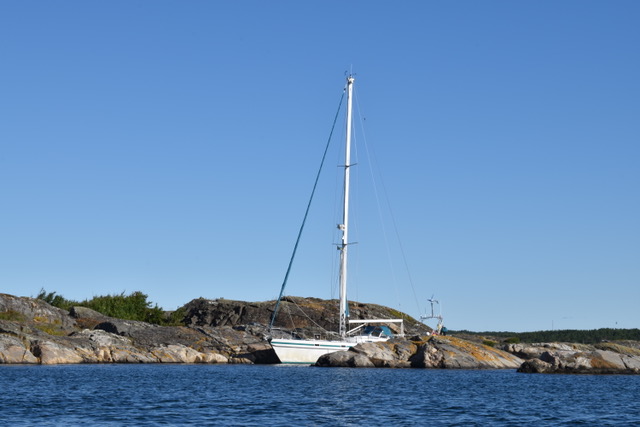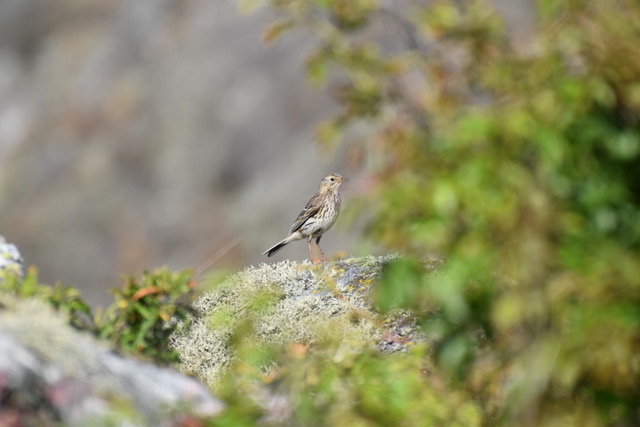Käringen, Koster archipelago, Sweden 58:51 .292N 011:02.735E

Pelagia
Frans & Sarah Toonen
Tue 11 Jul 2017 17:00
Tuesday 11 July 2017. 2nm. One engine hour. No wind. We set off from the anchorage intending to head south but instead decided to wind our way into the narrow channels amongst the tiny rocky islands south of South Koster. There are thousands of tiny rocks and we saw on the chart that there was a ‘deep’ bit (4-6m) right next to one. The ‘slot’ was about 10 meters wide and Frans drove very slowly forward to check the depth and then reversed out and turned Pelagia around so that we could go back in backwards and be head to wind for the anticipated southerly. We have to check depth by going forwards as the depth sounder is near the bow and if we strike the ground we then do so with the keel. If we went backwards we would strike with the rudder and this would cause damage to our steering mechanisms. The rock had metal rods/eyes fixed into it and we think perhaps the national park did this to assist visitors and prevent anchorage attempts as those could damage the sea bed. Our first mooring to rock was thus achieved and we were very sheltered because the hull was lower than the rock. Frans had hoped to do some underwater hull cleaning in the calm shallow waters whilst the sun was out but there were far too many jellyfish. In our slot we had over 30 just in one boat length. They are ‘Lion’s mane jellyfish’ (that’s Cyanea capillata to you Richard if you are reading this) and they thrive in cold oceans. Sweden is having an unusually cold summer and the water temperature is 3-5 degrees below summer average drawing the jellyfish further south than usual. We were only a mile from the little harbour of Kyrkosund on South Koster and as the weather was lovely and sunny we needed BBQ provisions so we went by dingy to the harbour and then walked the 3km to the shop and back. We have an electric outboard and charging this takes time even if you have shore power. We took the charger cable with us, found a power socket on the outside of a shed, tied the battery to a bench with a bike lock and the battery charged whilst we were off at the shop. When we got back we had neighbours on our rock and the lady said she had been at the same rock as a child. This is consistent with the ease we had observed when families of Swedes and Norwegians approach the ‘rock to’ moorings as they all jump off and scamper around very easily. Most are armed with metal spikes and hammers to create their own strong points as there are seldom trees or small rocks to secure to. The minimal tide and modest fetch in most areas foster this mooring approach. When we anchor there are usually a majority of boats against the rocks by choice. It wouldn’t work in Cornwall or Anglesey which is why it is so alien to the Brits. We had such sunny weather we stayed for 4 days relaxing. Strong south westerlies were forecast for Sunday and so we had to move on and try to get in to a marina for a few days - no mean feat in high season! The rock slot  The storm cloud that passed nearby - we were able to watch the lightning then hurry in out of the rain.  Tree pipits were nesting on the rock - or the very small trees!  Cyanea capillata  |